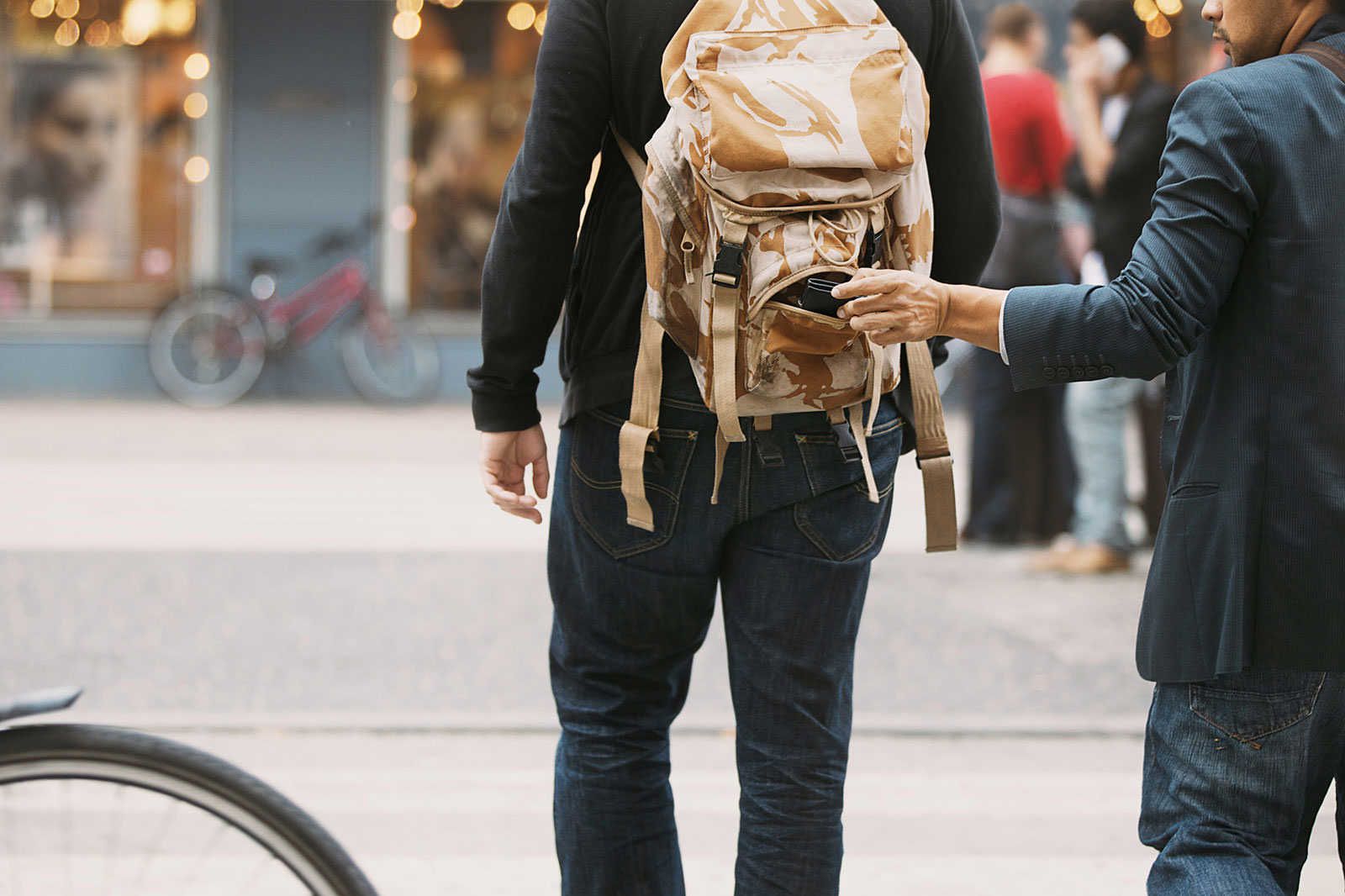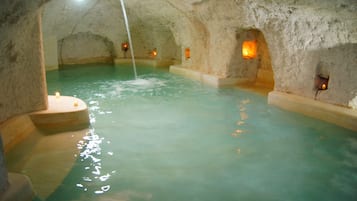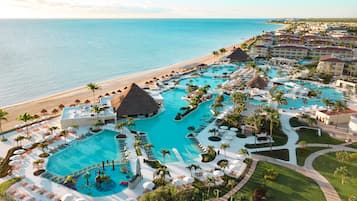Mexico does not have the best reputation when it comes to crime and scams, but not all of it is deserved. While there are certainly some areas of the country which can be dangerous for visitors, the majority of Mexico is as safe as anywhere else in the world, with most of the popular tourist destinations being well-policed.
Despite this, there are still plenty of people out there who want to make easy money and see tourists as convenient targets. The best defences against most are to trust your instincts, err on the side of caution, and be well-informed about what to expect. For this reason, we’ve made the following list of ways to stay safe in Mexico, detailing the common scams to avoid.
- 1
Be wary of sob stories
A little cynicism helps

Thanks to the country’s notorious reputation, it’s a little too easy to believe the sad stories you might be told by complete strangers, which often include having their luggage, passport or money stolen. A surprisingly common tale is that of a man claiming to be a recently robbed American pastor from Chicago. Acting under different aliases, this pastor has apparently been seeking donations for over a decade! They might ask for as little as $10 for a taxi or as much as $200 for a ticket home.
As a general rule, ignore anyone making unsolicited requests for money. If they’ve genuinely lost their belongings, they can (and should) go to the police and their embassy, not a random passer-by. Don’t give your phone to strangers asking to make an emergency call, either, as you might not get it back.
- 2
Be specific in your drinks orders
Avoid watered down liquor

In order to cut costs on bar supplies, a fair number of venues in Mexico have been known to water down their liquors – even some quite big resorts! In a few cases, the alcohol is mixed with something toxic and some travellers have become quite sick as a result, though this is increasingly rare.
The best way to avoid this happening to you is to be very specific in your order, asking for the alcohol by brand. If you order a “gin and tonic”, you might end up with some very cheap, watered down gin. If you ask for “Bombay Sapphire and tonic”, you are much more likely to get the real stuff. If possible, watch while they pour to make sure you’re getting full measures.
Lage: Mexico
- 3
Shop with care
That “genuine relic” probably isn’t one

At almost every major tourist attraction around Mexico, you’ll find a line of peddlers selling souvenirs. There’s normally at least one claiming to have genuine silver jewellery or historical artefacts in stock. This isn’t entirely unbelievable, since Mexico has a big silver mining industry and plenty of history to find artefacts from. The vendor might even have an official-looking license, proclaiming them to be an authentic silver seller.
Ask yourself this question: If they have genuine silver wares to sell, why don’t they have a proper store? Why are they peddling their goods beside the cheap, brightly coloured sombreros, fake purses, and plastic keyrings? Answer: It’s not real silver. If you’re looking for something high-end (and genuine), go to a legit shop. If you want a cheap souvenir, be sure to bargain hard and pay a realistic price.
- 4
Don’t pay in Mayan dollars
They’re not a thing

When you’re buying a souvenir, particularly near the many ancient ruins around Mexico, you might hear a price quoted in “Mayan dollars”. A small carving, for example, might be priced at just 3 Mayan dollars – sounds reasonable, right? Let’s skip over the fact that the Mayan civilisation didn’t have a formal currency and mostly traded through bartering and get straight to point: That 3 Mayan dollars will actually cost you 30 US dollars.
Fortunately, this scam is very easy to avoid, now that you know that there’s no such currency as Mayan dollars. If you are quoted a price in this mythical money, simply ask for the price in a real currency and bargain from there, or walk off and find a vendor who is not going to try to cheat you.
Foto von Laslovarga (CC BY-SA 3.0) bearbeitet
- 5
Skip the timeshare presentation
It’s not worth a share of your time

This is certainly not a scam that’s unique to Mexico, but it’s particularly common in the popular beach towns. You’ll be approached on the street by someone offering you a chance to win a small prize (either with a scratch card or by filling in a survey), which you are guaranteed to win. The only problem is that, in order to claim your paltry prize, you need to sit through an hour-long pitch for a timeshare or travel club or something similar.
The product they are offering is almost certainly a fake. It may sound very enticing – who wouldn’t want to part-own a house by a beautiful Mexican beach? – but you will find that the reality doesn’t match up to the sales pitch. Either the terms will be impossibly restrictive, the property will be extremely poor quality, or they’ll just take your deposit and you’ll never hear from them again. Don’t waste an hour of your valuable holiday time enduring their high-pressure sales tactics and just walk away.
- 6
Protect your valuables
Especially around metro stations

Pickpockets are an unfortunate fact of life in practically every part of the world, and Mexico is no exception. Unsurprisingly, they’re especially common around crowded, busy places such as markets, bus stations, nightclubs and on the Mexico City subway. The tactics employed are exactly the same as everywhere else in the world, so be wary of people barging into you or attempting to distract you.
The best defence against pickpockets is to keep your valuables secure, with most of them locked up in your hotel room. Don’t keep your wallet or phone in your back pocket and minimise the amount of money you keep on you. Keep your handbag or backpack zipped up and, if possible, carried on your chest when you’re in busy public places.
- 7
Choose the right taxi
Or use Uber

Taxis in Mexico, and particularly in Mexico City, have an especially bad reputation. Those that don’t massively overcharge or use an extortionate flat rate instead of the meter might just cut out the whole “scam” part and kidnap or rob you! At least, that’s what you might have heard.
Ok, so things aren’t usually that bad, but it does pay to be careful. It’s safer (if more expensive) to ask your hotel to find a taxi for you or use the sitios (radio taxis). Alternatively, use taxi-hailing and ride-sharing apps like Cabify or Uber. If you do hail a taxi on the street, make sure the license plate number starts with A or B (proving that it’s a real taxi) and that the ID of the driver is on display and matches the person behind the wheel.
Foto von ProtoplasmaKid (CC BY-SA 3.0) bearbeitet
- 8
Pay with cash wherever possible
Avoid card-skimming scams

Paying with plastic can be expensive in Mexico, and not just because of transaction fees. Card cloning is fairly common, with a number of creative methods used to make a duplicate of your bank card. There are fake ATMs in the shadier parts of Mexico City, and some shopkeepers will swipe your card through a cloner right before your eyes. There have also been cases of petrol stations near the airport swiping the cards of people in a rush, claiming it didn’t work and then demanding payment in cash. It did work, so you just paid for your petrol 2 or 3 times over.
Stick to using ATMs in banks as they’re not likely to be fakes. When making payments, use a credit card instead of your debit card, since you will get any stolen money back quicker. Generally, try to stick with making payments in cash.
- 9
Pay with small notes
Did that 500 peso note just become a 50?

While paying with cash is generally the safer option in Mexico, even this comes with its risks. You might hand a shopkeeper or taxi driver a 500 peso note and, a little slight of hand later, they’re claiming you gave them a 50 peso note. You’ll often believe them because the 2 notes look very similar. Alternatively, the note might magically become a torn or counterfeit one, which they’ll refuse to accept, leaving you out of pocket and carrying useless currency.
To avoid this, try to use small notes and give as close to the amount demanded as you can. It’s worth noting that you can spend torn notes in Mexico, or you can get them swapped at a bank for free. To spot a fake note in your change, look out for holograms and watermarks and feel for embossing in the images. If you find a fake note among your change, return it to the shopkeeper before you leave the store and they should swap it for a real one.
- 10
Use legitimate vendors for water sports
It’s cheaper in the long run

Almost every beach destination in the world is plagued with scam artists running the famous jet ski scam, and Mexico is no exception. It’s a tale as old as…well, as old as jet skis, probably. Someone offers you a great price to rent a watercraft, you have your fun and, on returning it, the vendor is outraged to find fresh scratches and damage. Obviously, the damage is about as fresh as this scam is, but that won’t stop them demanding reimbursement, sometimes up to the value of a new jet ski!
It’s always best to rent jet skis and any other water sports equipment from reputable companies. Your hotel will probably be able to suggest some good places. It may be more expensive in the short term, but it won’t cost you the price of a new jet ski. For extra safety, take photos of the craft before you set off so that you have a record of its condition. This advice also applies when renting cars and motorbikes.



















